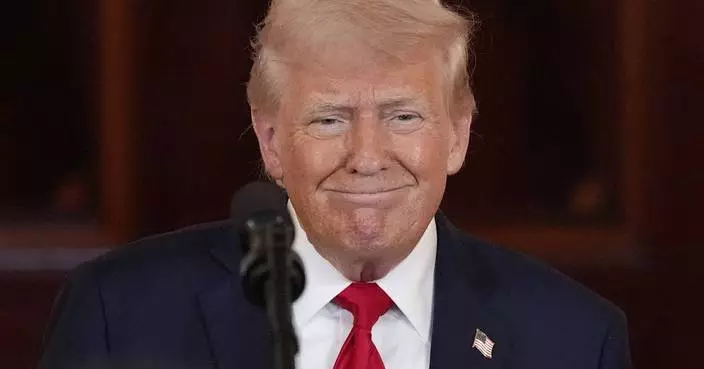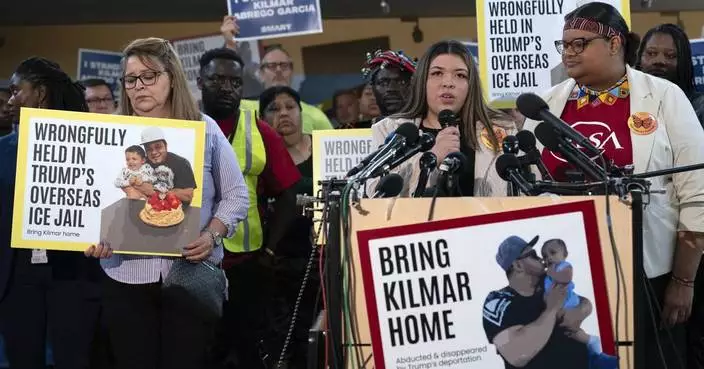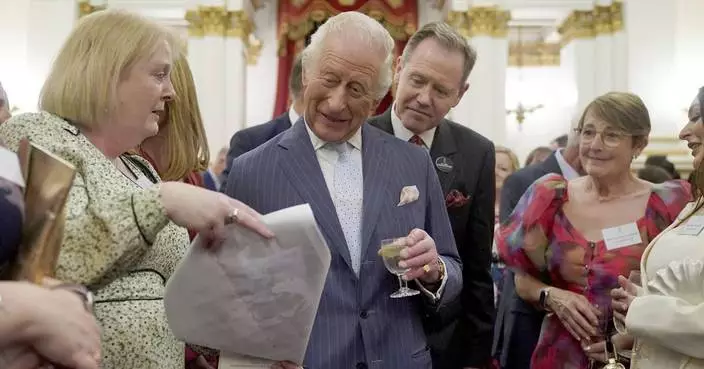BOSTON (AP) — Nick Foligno scored a pair of goals, Arvid Soderblom made 31 saves and the Chicago Blackhawks beat the Boston Bruins 5-2 on Thursday night.
Ryan Donato, Tyler Bertuzzi and Kevin Korchinski also had goals for the Blackhawks, who scored four goals in third period to pull away. Foligno's second goal was an empty-netter.
David Pastrnak and Morgan Geekie had a goal and an assist each for the Bruins and Jeremy Swayman made 16 saves. Boston has lost 13 of its last 15 games and is in last place in the Eastern Conference.
Bruins forward Riley Duran played in his first NHL game. A native of the Boston suburb of Woburn, he has 12 goals and four assists in 58 games this season for Boston's AHL affiliate in Providence.
Neither team is playoff-bound, but Chicago is now 3-6-1 over its last 10 games.
The Bruins are trying to climb out of the Eastern Conference cellar and had some hope after winning two of their pervious three, but took a step back in the loss to the Blackhawks.
The game was tied at 1-1 at the end of the second period, but Donato, Bertuzzi and Korchinski scored in a span of 1:33 early in the third period. Soderblom made several key stops in the second period.
The Bruins went scoreless on the power play in three chances.
Geekie extended his point streak to an NHL career-high nine games. He has seven goals and 10 assists in that span. He has a career-high 31 goals this season.
The Blackhawks return home on Saturday night to take on the Winnipeg Jets.
The Bruins play at the Pittsburgh Penguins on Sunday.
The Associated Press created this story using technology provided by Data Skrive and data from Sportradar.
AP NHL: https://apnews.com/hub/NHL

Chicago Blackhawks center Ryan Donato (8) celebrates in the second period after scoring his third goal during an NHL hockey game against the Vegas Golden Knights, Friday, March 28, 2025, in Chicago. (AP Photo/Melissa Tamez)
NEW YORK (AP) — Uncertainty continues to hang over the latest round of financial results and forecasts for companies both big and small as they try to navigate a global trade system severely shaken by a shift in U.S. policy.
Roughly half of the companies in the S&P 500 have reported their latest quarterly financial results, but the focus has been on how they will adjust to tariffs and any change in consumers’ behavior. Here’s a look a what companies are saying about tariffs and the potential impact:
General Motors expects tariffs to inflict between $4 billion and $5 billion in damage to its revenue for the year.
Auto companies like General Motors have operations spread out throughout North America, with auto parts and assembly steps often crossing multiple borders before a car is produced.
The company said that it expects full-year adjusted earnings before interest and taxes in a range of $10 billion to $12.5 billion. That’s down from a previous range of $13.7 billion to $15.7 billion.
President Donald Trump signed executive orders Tuesday to relax some of his 25% tariffs on automobiles and auto parts.
Harley-Davidson withdrew its financial forecast for the year because of uncertainty over tariffs and the economy.
The iconic motorcycle maker is facing an impact from 25% tariffs on steel and aluminum imports, along with other broader tariffs. It said it is focusing on productivity measures, supply chain management and cost controls to help deal with the impact from tariffs. The company gets just under 70% of its revenue from within the U.S., according to FactSet. That leaves a large chunk of its revenue exposed to retaliatory tariffs from other nations.
The U.S. Chamber of Commerce is asking the Trump administration for some relief on tariffs, particularly for small businesses that are the most affected.
The group is the world’s largest business federation and represents 3 million businesses of all sizes. In a letter to Secretary of the Treasury Scott Bessent, Secretary of Commerce Howard Lutnick and U.S. Trade Representative Jamieson Greer, U.S. Chamber CEO Suzanne Clark said the group agrees with many of President Trump’s policy goals, but said tariffs take time to work, and in the interim small businesses are being endangered by higher costs and a disrupted supply chain.
The Chamber is calling for automatic exclusions for any small business importer. It also wants to establish a process for businesses to apply for exclusions if they can show American employment is at risk from the tariffs, and asking for exclusions for all products that cannot be produced in the United States or are not readily available.
“Whether it is coffee, bananas, cocoa, minerals or numerous other products, the reality is certain things just can’t be produced in the United States,” said Clark. Providing some exclusions could help “stave off a recession,” she added.
Hershey reaffirmed its financial forecasts for the year, which include assessments for tariff expenses as they currently stand.
The chocolate maker estimates the current tariff expenses to range from about $15 million to $20 million in the second quarter. Hershey and other chocolate makers are already dealing with cocoa supply issues that have helped push prices higher. More than 70% of the global cocoa supply comes from West Africa and the region has been dealing with stressed and damaged crops for years.
Church & Dwight slashed its financial forecasts for the year as it faces the impact from tariffs and a potential slowdown in consumer spending.
The maker of Arm & Hammer and other household and personal care products now expects earnings to range from flat to 2% growth. It previously forecast earnings growth of up to 8%.
It estimated that its tariff exposure over the next 12 months is about $190 million. The company hopes to reduce that exposure by up to 80% with several measures, including no longer sourcing Waterpik flossers from China for the U.S. market. It will also potentially shut down or sell some of its brands.
Becton Dickinson trimmed its earnings forecast for the year to account for a tariffs currently in effect.
The medical device maker and supplies company expects earnings between $14.06 and $14.34 per share and that includes a 25 cents-per-share tariff impact. But the company has not estimated the potential costs of any delayed or threatened tariffs.
“Obviously, the situation remains extremely fluid,” said Chief Financial Officer Christopher DelOrefice, in a conference call with analysts. “We will see how the next few months play out as it relates to further tariff rates.”
McDonald’s, like other fast-food operations and restaurants, is dealing with the economic uncertainty fueled by the tariffs.
The company reported that store traffic fell further than expected during the first quarter. Sales at locations open at least a year in the U.S. slumped 3.6%, marking the biggest decline for the company since 2020, when a pandemic shuttered stores and restaurants.
“We believe McDonald’s can weather these difficult conditions better than most,” said CEO Chris Kempczinski, in a conference call with investors. “However, we’re not immune to the volatility in the industry or the pressures that our consumers are facing.”
AP writers Michelle Chapman, Mae Anderson and Dee-Ann Durbin contributed to this report.

FILE - The General Motors logo is displayed at the General Motors Detroit-Hamtramck Assembly plant in Hamtramck, Mich., Jan. 27, 2020. (AP Photo/Paul Sancya, File)




















































